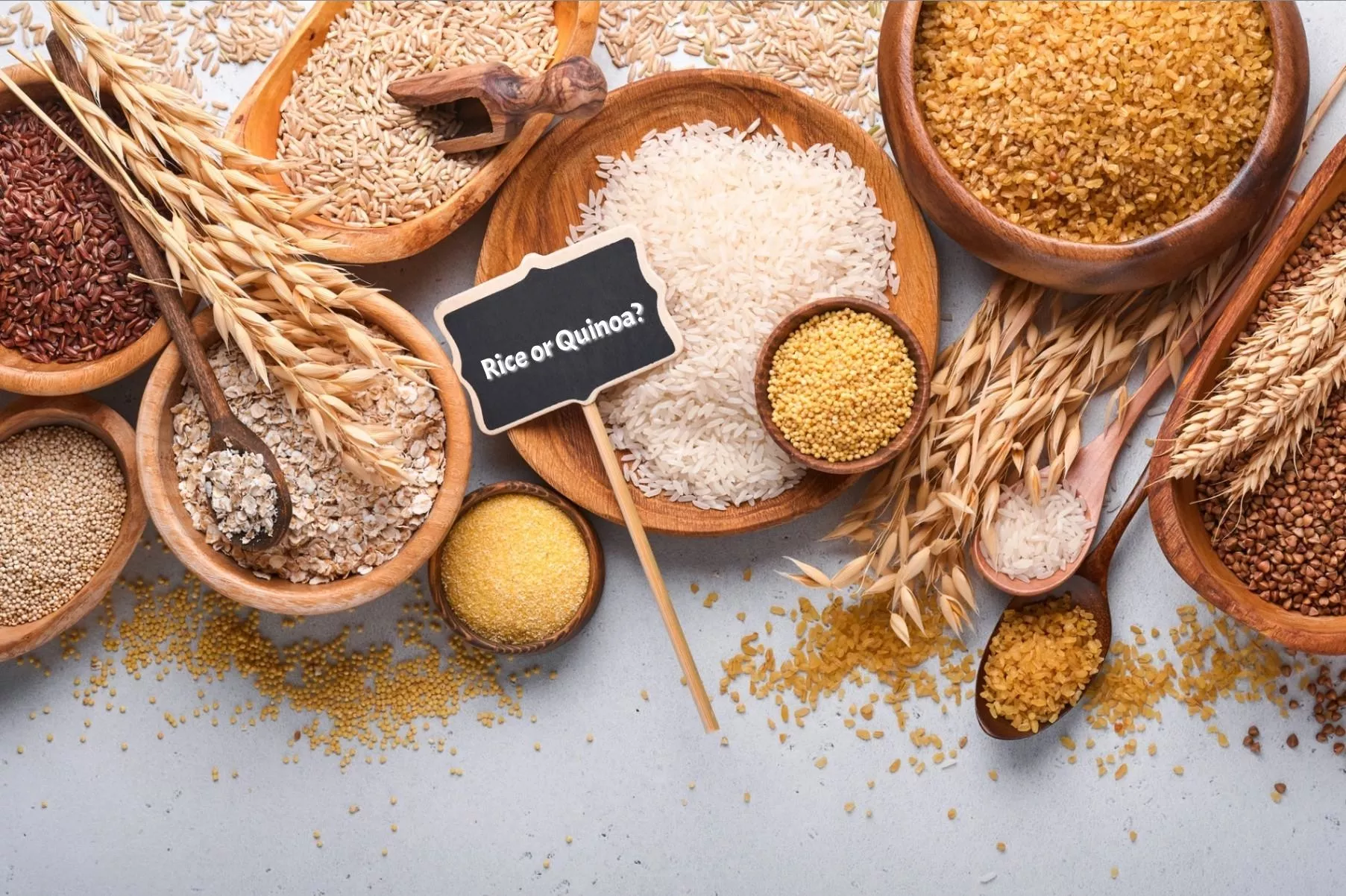What are Rice and Quinoa?
Rice is a small seed that comes from grass plants. It is considered a staple food in many different countries around the world and billions of people probably eat it every single day. There are numerous different types of rice, each of which has its own set of uses and health benefits. The two best known types of rice are brown rice and white rice, and brown rice will normally have more nutritional value than white.
Despite what people believe, quinoa is not actually a grain. However, the mistake is easy to understand as it is grown and prepared like one, and it is viewed as a grain from a culinary point of view. Similar to rice, it is an edible seed of a plant and it has been a staple food for thousands of years.
Health Benefits of Rice
As mentioned, there are several different types of rice, the best known being brown and white rice. They have very different nutritional profiles. Brown rice is more nutritional as white rice has been stripped of most of its husk, germ and bran. The vast majority of white rice found in shops has been enriched, but brown rice will normally be the healthier option.
White rice is known as being easy to digest. It is part of the BRAT diet (bananas, rice, applesauce and toast), which is often recommended to people after they have had vomiting or diarrhoea.
There are several health benefits to brown rice. For example, there is evidence that it may reduce high blood pressure. Many people who are trying to lower their blood pressure will start eating brown rice because of this. There are several reasons for this, such as its high potassium levels, its ability to promote weight management and its ability to stabilise the body’s insulin levels due to its low glycaemic index. Furthermore, as brown rice contains lots of fibre, it helps people stay fuller for longer, thereby reducing the amount they eat.
An additional benefit of brown rice is that it may reduce the risk of cancer. It contains three distinct types of phenolics, which are antioxidants that naturally occur in plants. These can reduce the risk of cancer by preventing free radicals from damaging cells. Phenolics are found in the bran layer of rice and in the germ part of a grain. When the bran is removed to make white rice, many of the phenolics are then lost.
Health Benefits of Quinoa
While quinoa looks and tastes similar to rice, its nutritional profile is closer to that of the leafy vegetable members of the Amaranthaceae family, such as spinach and beetroot. Quinoa is absolutely packed with nutrients. It is gluten free and high in protein, fibre and healthy minerals.
In fact, quinoa has more than double the fibre content of other grains, which makes it excellent for heart health and digestion. Furthermore, it is considered a complete protein, which means that it contains all nine of the essential amino acids that the body needs to function properly. It is one of very few plant-based complete proteins. As mentioned, quinoa is also packed fully of healthy nutrients and minerals, such as potassium, zinc, magnesium and iron. However, as it is full of Phytic acid, you will need to make sure that the quinoa has been soaked before eating if you want to fully benefit from all of these nutrients.
There is also evidence that quinoa is good for the gastrointestinal tract. A study in 2012 found that polysaccharides in the cell wall of quinoa showed gastro-protective activity against acute gastric lesions in rats. While more study is needed in humans, the theory is that quinoa has anti-inflammatory abilities that will help the gut.
To Conclude
Rice and quinoa are very similar in terms of calories and fibre content. They are both nutritious ingredients that can form part of a well-balanced diet. However, quinoa is better for you overall. It is a complete protein whereas brown rice only contains a few essential amino acids. Quinoa also contains more overall nutrients.
However, it doesn’t mean that you should dismiss brown rice. You may find that you need some of what it offers, such as a higher level of manganese and selenium. In other words, you can enjoy both and make your choice based upon your personal dietary needs.

 Creative Ways to Turn Leftovers into Breakfast
Creative Ways to Turn Leftovers into Breakfast 11 Cost-Effective and Healthy Meals
11 Cost-Effective and Healthy Meals



